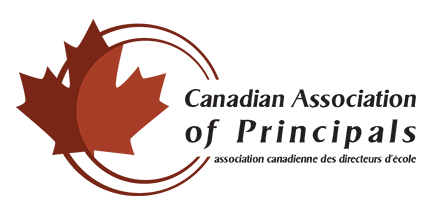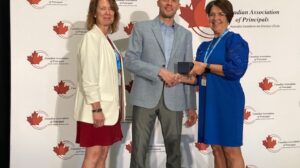CAP 2024 KEYNOTE SPEAKERS:
Douglas Sanderson and Andrew Stobo Sniderman
We invite you to attend our keynote remarks, in which we will try to address a basic question: why are outcomes for Indigenous students so unequal? We do this by drawing on lessons from the story of two neighbouring communities, to see how they became separate and unequal over time.
Our recent book, Valley of the Birdtail: Indian Reserve, a White Town, and the Road to Reconciliation,focuses on students, teachers and schools. Here is how the story begins:
“People say Manitoba is so flat that you can watch a dog run away for days. Not here, though—here, there is a valley, the parting gift of a retreating glacier. Along the floor of this valley winds the Birdtail River. It is not the mightiest of rivers; some maps acknowledge a mere creek. Still, the current was once strong enough to drown a boy. That’s how the Birdtail River got its name, or so an old story goes.
Sioux Indians on a buffalo hunt had set up teepees beside the river. The sun was high and bright when the Chief ’s son, a toddler, noticed an enchanting bird over the water. Its feathers were turquoise, except for its breast, which was as red as a raspberry. Transfixed, the boy walked to the edge of the river. As the boy watched, a hawk swooped from above to attack the colourful bird, which narrowly dodged the predator’s talons with a sudden contortion. The movement dislodged from the bird’s tail a single blue feather, which floated slowly downward, twirling in the breeze. It was falling close to the boy—so close that he reached out to grasp it. But he leaned too far and fell into the river.
Later, too late, the boy’s body was recovered downstream, bobbing like driftwood. One of his tiny hands was balled into a fist. Inside was the bird’s bright blue feather.
After the drowning, the river was called the Bird’s Tail, which became, in time, the Birdtail. In 1877, federal surveyors marked out an Indian reserve near the river’s western bank. The community assumed the name of its leader, Waywayseecappo, which means ‘The Man Proud of Standing Upright.’
Two years later, a group of settlers decided to plant a crop of potatoes on the other side of the river. They called their new town Rossburn, in honour of the man who built its first school, Richard Ross. According to a local history written in 1951, ‘Nowhere in Manitoba is there a finer sight than the valley of the Birdtail, just west of the present town of Rossburn. It must have grieved the early settlers to find it set aside as an Indian Reserve.’
Waywayseecappo and Rossburn have been neighbours nearly as long as Canada has been a country. The town and the reserve are divided by a valley, a river, and almost 150 years of racism.
Today, the average family income in Rossburn is near the national average, and more than a third of adults have graduated from university. By contrast, the average family in Waywayseecappo lives below the national poverty line, and less than a third of adults have graduated from high school.
This book is about how these two communities became separate and unequal, and what it means for the rest of us. The story of Waywayseecappo and Rossburn reflects much of what has gone wrong in relations between Indigenous Peoples and non-Indigenous Canadians. It also offers, in the end, an uncommon measure of hope.”
Douglas and I hope you will join us for our initial remarks, and then for the discussion that will follow. Together, we will explore pressing questions about reconciliation, education and inequality.
AUTHOR BIOS:
Douglas Sanderson (Amo Binashii) is Beaver Clan, from the Opaskwayak Cree Nation. He is a Fulbright Scholar, and holds the Prichard Wilson Chair in Law and Public Policy at the University of Toronto, Faculty of Law. Professor Sanderson has served as senior Advisor to the government of Ontario, in the offices of the Attorney General and Aboriginal Affairs.
Andrew Stobo Sniderman is a writer, lawyer and Rhodes Scholar from Montreal. He has written for the New York Times, the Globe and Mail and Maclean’s. He has also argued before the Supreme Court of Canada, served as the human rights policy advisor to the Canadian minister of foreign affairs, and worked for a judge of South Africa’s Constitutional Court.











